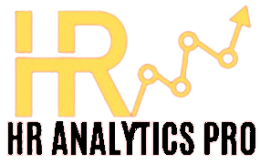Understanding HRM and Personnel Management
January 14, 2024 2024-03-01 13:29Understanding HRM and Personnel Management
Understanding HRM and Personnel Management
Understanding the Distinction Between HRM vs Personnel Management
Exploring the Evolution from Traditional Personnel Management to Modern HRM
By [Shreya T]
Introduction
The terms ‘Human Resource Management’ (HRM) and ‘Personnel Management’ have often been used interchangeably, yet they differ in several significant ways. This article aims to elucidate these differences and explore how the field has evolved from traditional personnel management to the more dynamic and integrated practice of HRM.
1. From Health and Happiness to Strategic Integration
Personnel management was traditionally seen as the “health and happiness” division, primarily responsible for employee welfare activities like organizing company events. However, as management theories evolved, a paradigm shift occurred, placing greater emphasis on employees’ strategic role in organizations. This shift marked the emergence of HRM as a critical component of organizational strategy.
2. Personnel Management vs. Human Resource Management
- Functional Area vs. Philosophical Approach: Personnel management is a specific functional area within an organization, whereas HRM represents a broader philosophy and approach towards managing people.
- Integration with Corporate Strategy: Unlike personnel management, HRM is deeply integrated with the overall corporate strategy, playing a key role in achieving organizational goals.
- Humanization of Management: HRM emphasizes the humanization of management, treating employees not just as resources but as valuable assets.
- Concern of All Managers: HRM is not just the concern of a specialized department but is the responsibility of all managers across the organization.
- Accomplishment of Goals: HRM focuses on aligning human resource strategies with organizational objectives, whereas personnel management primarily deals with the administration of personnel policies.
- Focus on Motivation and Morale: HRM places a significant emphasis on boosting employee morale and job satisfaction, while personnel management is more concentrated on recruitment, selection, and performance appraisal.
- Working with People: HRM is concerned with fostering teamwork and building a conducive work environment, in contrast to the more administrative orientation of personnel management.
3. The Evolving Role of HRM in Modern Organizations
The modern HRM function is integral to organizational success. It encompasses strategic planning, talent management, performance enhancement, and fostering a culture of continuous growth and development.
Conclusion
The distinction between HRM and personnel management underscores the evolution of how organizations view and manage their human resources. From being a mere administrative function, HR management has transformed into a strategic partner, instrumental in driving business success.






